(Tournus 1725 - 1805 Paris)
The Death of Coresus, circa 1750
Pen and brown ink, black ink tips, gray wash on black chalk, 455 x 385 cm
Bears on the reverse in the lower right an inscription in brown ink "Fragonard Père"
Provenance
Possibly Fragonard’s father collection, 18th century
WGT Collection
Henri LEDOUX (20th Century), his stamp lower left
Private collection, Italy
Private collection, France
We are grateful to Madame Yuriko Jackall, Chief Curator of French Paintings from the Wallace Collection, London, for confirming the attribution to Greuze on the basis of photographs.
Unpublished, this large sheet of Jean-Baptiste Greuze constitutes an interesting rediscovery on more than one count, in particular on the historical and iconographic level. The painter of emotions, who excelled in genre painting, produced a limited number of works on mythological subjects such as this. For instance, the March of Silenus, recently on auction (Christie’s Paris, May 18, 2022, lot 51, graphite, pen and brown and black ink, gray wash, 537 x 367 cm) and some Venuses and Psyches.
In our sheet, the graphic style that would become typical of Greuze combines brown and black ink with gray wash to skillfully place light and shadow on a sketch of light black chalk. The drawing can be compared to the Departure of the Young Savoyard, Historisch Museum in Amsterdam, dated 1750-1760 (Greuze le Dessinateur by E. Munhall, exp. cat., New York, The Frick Collection; Los Angeles, Musée J. Paul Getty, 2002, no. 56).
Executed with the tip of a brush and in gray-brown wash and heightened with black ink on black chalk, this fiery and lyrical drawing is an outstanding example of Greuze's early works, executed mainly in wash. The beauty and strength of this drawing demonstrate the draughtsmanship of the young artist, fostered by the influences of his contemporaries. He also embraced the monumentality and strength which created an unusual visual impact. Greuze's art sought to illustrate virtue as conceived by the philosophers of the Lumières. The contrast between the often-cynical rococo hedonism and the glorification of virtuous feelings in Greuze is quite striking.
A subject inherited from Pausanias (VII 21), it does not seem to relate to any of Greuze's surviving paintings. His free style and his way of presenting the composition with rapid and bold lines and a fluid wash already announce the future preparatory sketches of Greuze, which will relate to his largest painted commissions. Stylistically, he augurs his drawings of subjects of more classical inspiration, dating from the 1760s; and even mature works like Morning Prayer, circa 1775, ink and graphite on paper, kept at the Greuze Museum in Tournus.
Greuze's ability to produce strong images of almost theatrical quality is embodied in our drawing. Like a stage set, its characters interact under a curtain backdrop, their emphatic gestures conveying the drama of the scene as Coresus lies on his bed, Callirohe kneeling at his side.
Son of a roofer and architect, Jean-Baptiste Greuze was drawn to drawing from an early age and very early on showed a talent for painting, which prompted his father to place him as an apprentice in the studio of the Lyon painter Charles Grandon. Greuze developed his pictorial technique there but could not forge a precise artistic taste for lack of a master's work to observe and copy. He then continued his apprenticeship in Paris at the Royal Academy of Painting and Sculpture, where he was a pupil of the famous Charles Joseph Natoire, Painter to the King. His debut at the Salon of 1755 was a triumph. His Père de famille lisant la Bible à ses enfants was a great success. He became an associate member of the Academy and went to study in Rome from 1755 to 1757.
The rediscovery of our refined composition completes the graphic corpus of Greuze's work, and its importance is still justified in that it allows us to grasp the artist's style at an early stage.










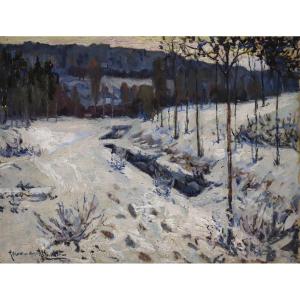



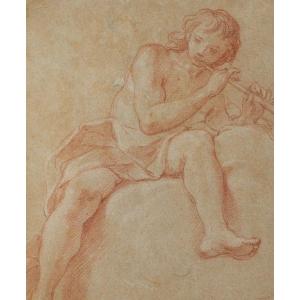

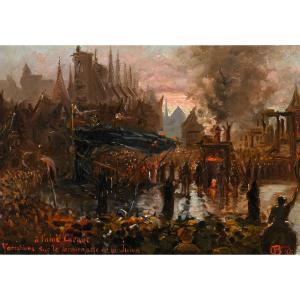



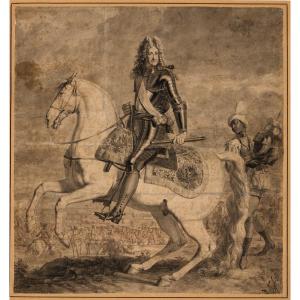

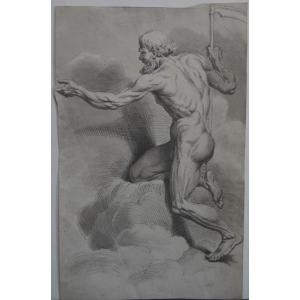


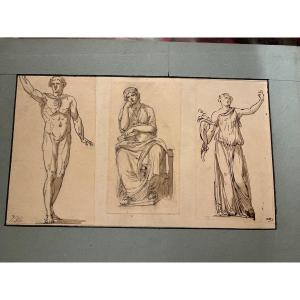




 Le Magazine de PROANTIC
Le Magazine de PROANTIC TRÉSORS Magazine
TRÉSORS Magazine Rivista Artiquariato
Rivista Artiquariato